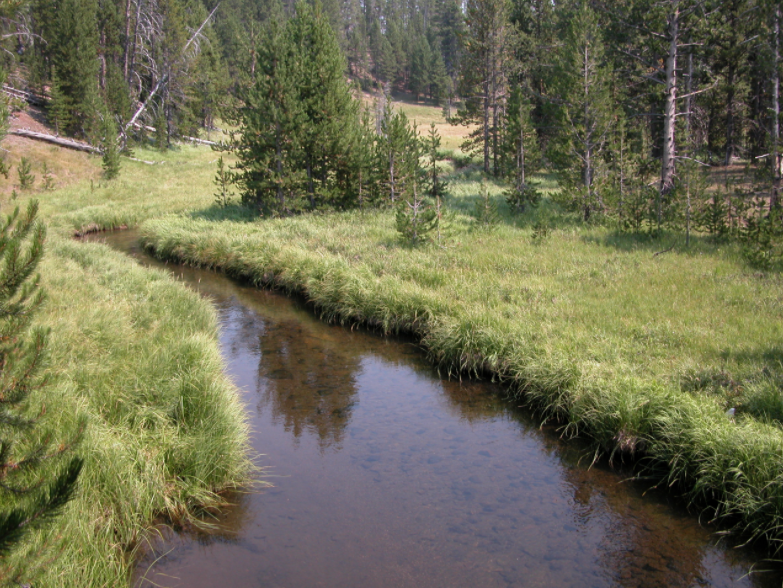By Chris Hunt
I first fished the upper Gibbon River some 20 years ago. In its quiet, high reaches above Virginia Cascades, it is perhaps the prettiest stretch of meadow stream in all of Yellowstone.
It snakes, cold and deep, through a picturesque mountain valley below a couple of high-country lakes that source it. Its banks are lined by waist-high grass and, since the elk have been forced to move around a bit more thanks to the reintroduction of wolves in 1995, willows have begun to spring up on the edges, providing great overhanging cover and some pretty impressive obstacles for small-stream fly fishers.
But the only fish I’ve ever managed to catch in these sexy upper reaches are non-native brook trout (grayling that move down from Wolf and Grebe lakes are there in very small numbers, reportedly). First introduced into the waters of Yellowstone National Park more than a century ago, brookies have taken over a host of area waters from native cutthroat trout and Arctic grayling. The Gibbon below Virginia Cascades gets bigger and wanders through both Elk Meadows and Gibbon Meadows, where it ceases its existence as a brook trout stream and instead becomes a haunt for wily browns and a few rainbows.
In fact, the rainbows in the Gibbon were among the first non-native trout to introduced to Yellowstone waters. It’s certainly possible that the first planting of rainbow trout in the Gibbon are the seed-stock for the trout that live in the lower Firehole and in the Madison, the river that starts where the Gibbon and the Firehole meet.
But the diminutive brookies that I’ve always caught in the river’s upper reaches didn’t show up until about 1905, according to National Park Service biologists. And, when they arrived, there’s a chance they were the first salmonids ever in that stretch of river—it’s likely the Gibbon above Virginia Cascades was historically fishless, as were both Wolf and Grebe lakes, the sources of the Gibbon, high on a plateau between the Yellowstone and Gibbon river drainages.
Earlier this week on quick day-trip to the park, I saw some informational signage along the upper Gibbon and quickly remembered that the brookies in this stretch of water … well, their days are numbered. The signs indicated that the river is being restored for trout and grayling that actually belong in the drainage, and that non-native brookies are being removed.
As part of Yellowstone’s Native Fish Conservation Plan, the National Park Service is removing all the fish from Wolf and Grebe lakes, and the upper Gibbon River in order to plant native west slope cutthroat trout and fluvial (river-dwelling) Arctic grayling in this most gorgeous stretch of trout stream, in a river where they belong.
Well, sort of.
Remember that the upper Gibbon was likely fishless before those first brookies arrived. But the Gibbon River below Virginia Cascades was home to both cutthroats and grayling. Today, as the climate changes and Yellowstone’s waters warm, habitat for native trout is being squeezed, and finding “refugia” for these fish is vital for the preservation of both species. The upper Gibbon runs cold—it’s well above the Norris Geyser Basin that dumps geothermal water into the river that, combined with warming days during the summer, makes the middle stretch of the river likely too warm for trout, forcing them to retreat into tributaries or hover over cold spring seeps. In short, the lower river isn’t the right place for a comprehensive reintroduction. The upper river, with it’s cold, year-round flows, is perfect.
So, while I’ll temporarily lament the loss of the chance to cast to rising trout in one of the most beautiful trout streams on earth, I’m taking heart in the fact that, in the years ahead, I might be able to put flies over eager grayling and cutthroats in a place that gives them a fighting chance at long-term survival.
That’s a small price to pay, right?
Chris Hunt is the national digital director for Trout Media. He lives and works in Idaho Falls, Idaho.



